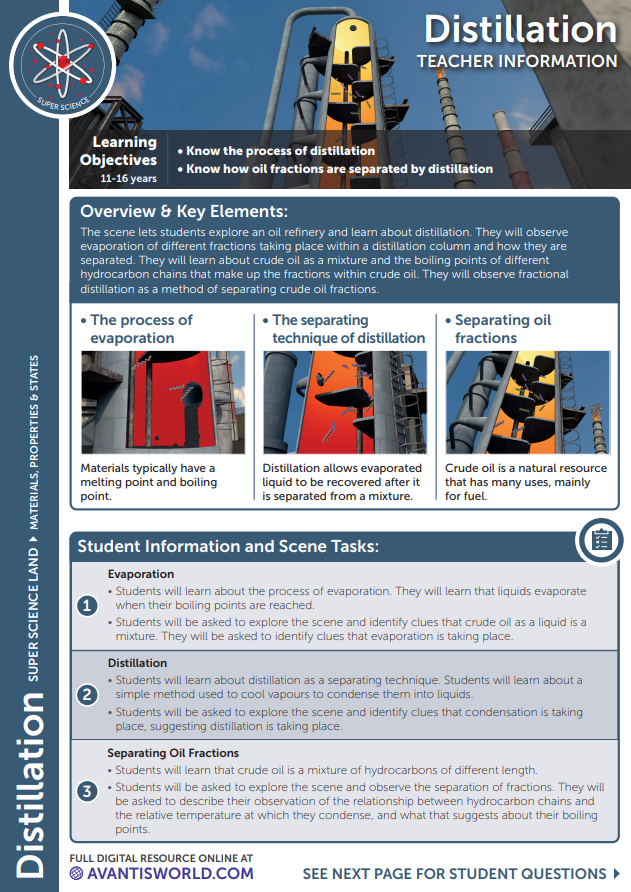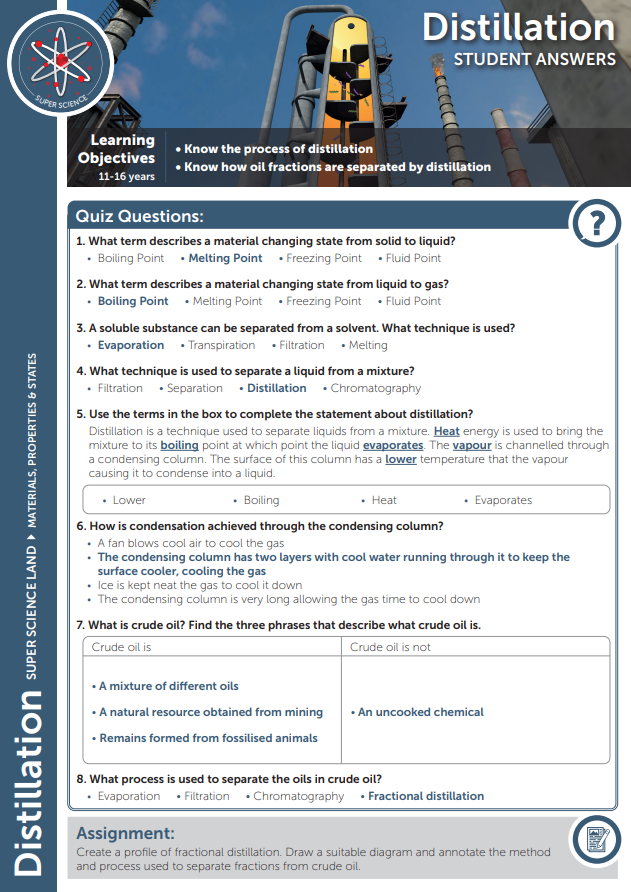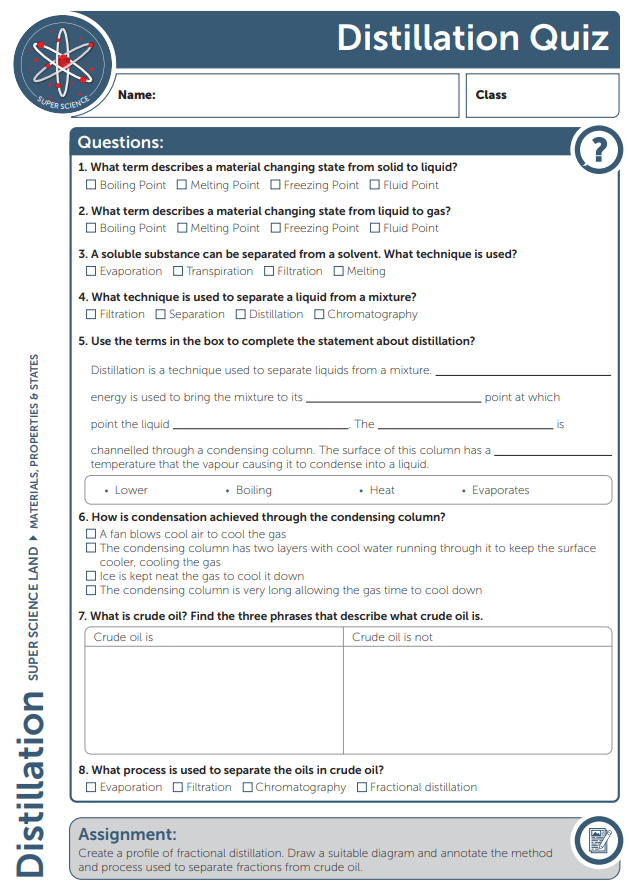 Loading...
Loading...
Initial language selection is based on your web browser preferences.
# Learning objectives 1: Be able to describe the process of distillation{.info} 2: Be able to describe how crude oil fractions are separated{.info} 3: Be able to explain why oil fraction separate at different temperatures{.info} # Evaporation{.objective .objective1} In this section, the process of evaporation will be described. The process will be outlined as particles absorbing heat energy from a heat source, vibrate and move faster. Once boiling point is reached, evaporation takes place due to the change of state from a liquid to a gas. This process can be observed within the distillation column when the crude oil enters the column. # Distillation{.objective .objective2} In this section, distillation as a separation technique will be described. Mixtures that have 2 or more components, usually have different boiling points. Once heated, evaporation can be used to separate one from another, such as the solvent from a solute. The evaporated part can be cooled within a condensing column where it will change from a gas to a liquid and can be collected as a separated fraction of the original mixture. # Separating Oil Fractions{.objective .objective3} In this section, a description of crude oil as a mixture of oil fractions made of molecules of different sizes will be outlined. The examples of the fractions within crude oil will be provided with the temperature they will evaporate when heated. This allows oil refineries to separate oil fractions and extract them for individual use. The process will described as fractional distillation. # Teacher Resources ### Download Teacher Notes [](https://data.avncloud.com/activities/791807/files/Distillation%20Teacher+Notes+Only.pdf?date=1675875056&size=1050484&md5=1a4dcff9ea251eda66f16f8b90170b8d) ### Student Quiz Answers Document [](https://data.avncloud.com/activities/791808/files/Distillation%20Quiz+Answers.pdf?date=1675875307&size=517551&md5=c866e4d9fb2548e3913a1b8b661e3a3f) ### Download Student Quiz Document [](https://data.avncloud.com/activities/791809/files/Distillation%20Quiz+Only.pdf?date=1675875435&size=94575&md5=00d12888199eafadeb33d49dd532514b)